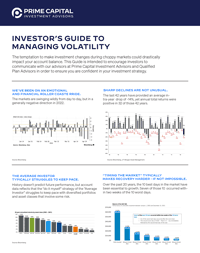In the realm of personal finance, numerous rules of thumb have been used through the years to simplify complex concepts and attempt to guide individuals towards achieving financial security. However, as the world evolves and financial landscapes change, some of these long-standing rules are becoming increasingly outdated.
In this article, we will explore five such rules. Let’s dive in and explain why these rules may no longer hold up in today’s dynamic economic environment.
1) The 4% Rule
The 4% Rule was created in 1994 by a rookie financial adviser named Bill Bengen. He used it as a guideline, suggesting that withdrawing 4% of your retirement savings annually upon retirement would afford you the security of income for the rest of your life. Even though he has subsequently changed his mind, the 4% Rule persists as a benchmark for retirement planning, chiefly among brokers and non-fiduciary financial professionals who are more focused on the accumulation phase of an individual’s life rather than on their retirement or decumulation phase.
One of the big problems with the 4% Rule is that it assumes a static investment return, which doesn’t reflect the unpredictable nature of the market. Additionally, with increasing life expectancy and inflation, relying solely on a fixed withdrawal rate can lead to an inadequate nest egg over time.
Perhaps most importantly, the 4% Rule completely ignores sequence of returns risk. With sequence of returns risk, if you happen to get unlucky and the market takes a dip during the first five years or so of your retirement (when you have the largest amount of money and therefore 4% will take the biggest bite out of your portfolio), you could run out of money prematurely if you keep withdrawing. Many retirees learned this the hard way during the global economic recession of 2008.
It’s important to make sure your income needs are covered using strategies like buckets and diversified income streams developed by a financial advisor who is experienced in retirement, not just accumulation.
2) The Rule of 72
The Rule of 72 is a simple formula used to estimate the number of years it takes for an investment to double, based on a fixed annual interest rate. Basically you divide 72 by the interest rate to obtain an approximate doubling period.
However, this rule oversimplifies the compounding effect and fails to consider inflation or varying rates of return. In today’s low-interest-rate environment, the Rule of 72 can provide misleading results and lead to unrealistic expectations.
Stocks do not have a fixed rate of return, so you cannot use the Rule of 72 to determine how long it will take to double your money in the stock market. However, you can use the formula to estimate the average annual return you will need to receive in order to double your money in a fixed amount of time.
3) The Magic Retirement Age of 65
It’s not really a rule, but we tend to name 65 as our standard retirement age in America, assuming that retiring at the age of 65 is ideal for everyone. Signing up for Medicare is still mandated at age 65, so perhaps that’s why.
In the past, life expectancy was lower and retirement benefits were often more generous—for instance, pensions used to exist on a widespread basis. Back then, retiring at age 65 often made sense. Nowadays, many individuals are working longer, either by choice or necessity, due to improved health, financial considerations, or changing career dynamics. The concept of a fixed retirement age is no longer applicable to a diverse and evolving workforce.
As mentioned, although applying for Medicare is required at age 65 unless you are covered by an approved health insurance workplace plan (and failing to file on time can mean you pay higher premiums permanently), the full retirement age to receive Social Security benefits was raised from age 65 back in 1983.
For those born in 1954 or earlier, your full retirement age is 66, not 65. For those born in 1955; the FRA is 66 and two months, 1956: 66 and four months, 1957: 66 and six months, 1958: 66 and eight months, 1959 66 and ten months, and 1960 or later: it’s age 67.
Monthly Social Security income still plays a major role in retirement for nearly everyone, so you need to understand that the age that you file makes a difference to the benefit amount you receive. Claiming at an age younger than your full retirement age will reduce your benefit. For example, if your FRA is 67 and you elect to begin claiming benefits at age 62, your monthly benefits will be 70% of the benefit available at full retirement age. And if you claimed at age 65, you’d receive only 86.7% of your full retirement benefit.
On the other hand, if you wait from your FRA to age 70, you will see your benefit increase by 8% every year. After age 70, it makes no sense to wait because your benefit won’t go up any further.
4) The 60/40 Rule
The 60/40 Rule advocates maintaining a portfolio allocation of 60% stocks and 40% bonds as a balanced investment strategy. This rule aims to strike a balance between growth and stability. However, as the financial landscape has evolved, traditional asset classes no longer provide the same risk-reward profiles. And the inversely proportional relationship between stocks and bonds is often blurred—bond funds are often correlated to market returns these days.
Your financial advisor needs to take into account your age and time horizon to retirement as well as your personal appetite for (or aversion to) risk and potential loss in your portfolio instead of adhering to the 60/40 rule. Adhering rigidly to it may limit potential returns and fail to capture the benefits of diversification; today there are other asset classes besides stocks and bonds that can enrich and diversify your portfolio.
5) The Rule of 100
The Rule of 100 is similar to the 60/40 Rule but it quantifies the ratio by age. The Rule of 100 proposes that individuals should subtract their age from 100 to determine the appropriate allocation of stocks versus bonds in their portfolio. According to this rule, younger individuals should have a higher percentage of stocks, while older individuals should shift towards bonds.
However, increased life expectancy, coupled with the need for long-term growth and inflation protection, challenges this rule. Many experts now recommend a more individualized approach that considers factors like a person’s risk tolerance and financial goals in addition to their age. For instance, not everyone who is age 60 wants 40% of their portfolio exposed to risk.
Using specific retirement strategies like buckets might change your whole approach. Read more here: https://pciacharleston.com/how-can-you-keep-from-running-out-of-money-in-retirement/
As the financial landscape continues to evolve, it is crucial to critically evaluate long-standing rules and adapt them to meet current needs. What were once considered reliable guidelines in the past have seen their applicability and effectiveness diminished over time. Seeking professional help from a fiduciary advisor—especially as you get closer to retirement—can be transformative. The personalized advice, emotional guidance, comprehensive financial planning, and time-saving capabilities offered by a qualified financial advisor can have a profound and lasting impact on your financial well-being.
If you have any questions about these rules or would like to discuss your retirement, don’t hesitate to reach out to Jason Noble at 843.743.2926 or schedule an appointment here!
This article is provided for general information only and is not to be construed as financial or tax advice. It is recommended that you work with your financial advisor, tax professional and/or attorneys when tax planning.
Advisory products and services offered by Investment Adviser Representatives through Prime Capital Investment Advisors, LLC (“PCIA”), a federally registered investment adviser. PCIA: 6201 College Blvd. Suite #150, Overland Park, KS 66211. PCIA doing business as Prime Capital Wealth Management (“PCWM”) and Qualified Plan Advisors (“QPA”).





